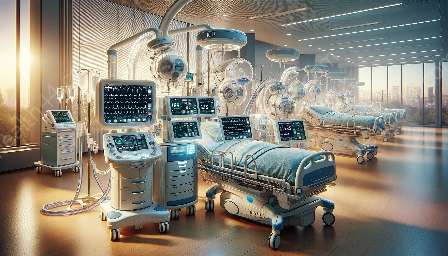Continuous Positive Airway Pressure (CPAP) devices are a crucial component of life support systems and fall within the realm of medical devices and equipment. These devices provide a non-invasive method of respiratory support, particularly for patients with sleep apnea, respiratory distress, and related conditions. Understanding the technology, application, and benefits of CPAP is essential for healthcare professionals and patients alike.
Understanding CPAP Devices
CPAP devices are designed to deliver a continuous flow of air or oxygen at a steady pressure to the airways of the lungs. This pressure helps keep the airways open, preventing collapses or obstructions that can lead to breathing difficulties, especially during sleep. The primary function of CPAP devices is to provide a consistent level of pressure throughout the breathing cycle, ensuring that the airways remain open and unobstructed.
CPAP devices consist of several key components, including a motor that generates the airflow, a humidifier to add moisture to the air, a mask or nasal prongs to deliver the airflow to the patient's airway, and tubing to connect the various elements. The devices may also include advanced features such as data tracking, remote monitoring, and adjustable pressure settings to suit individual patient needs.
Role within Life Support Systems
CPAP devices play a crucial role in life support systems, particularly for patients with respiratory conditions that require assistance in maintaining proper breathing patterns. These devices are instrumental in managing sleep apnea, a condition characterized by pauses in breathing during sleep. By delivering a continuous stream of air, CPAP devices effectively prevent the airway from collapsing, allowing patients to breathe normally throughout the night and experience restorative sleep.
In critical care settings, CPAP devices are also used to provide respiratory support for patients experiencing respiratory distress due to various medical conditions. This may include acute respiratory failure, pneumonia, chronic obstructive pulmonary disease (COPD), and other respiratory disorders. CPAP therapy can improve oxygenation, reduce the work of breathing, and alleviate symptoms, making it an essential tool for life support in these scenarios.
Compatibility with Medical Devices & Equipment
CPAP devices are designed to be compatible with other medical devices and equipment, ensuring seamless integration into patient care protocols. For instance, CPAP devices may be used in conjunction with pulse oximeters to monitor oxygen saturation levels, ventilators for advanced respiratory support, and sleep diagnostic equipment to assess the effectiveness of therapy.
Furthermore, the development of CPAP technology has led to the creation of portable and travel-friendly devices, offering patients greater flexibility in managing their respiratory health. These portable CPAP devices are compatible with various power sources, including battery packs and adapters, allowing patients to maintain their therapy regimen while on the go.
Benefits of CPAP Devices
The use of CPAP devices offers numerous benefits to patients requiring respiratory support. Some of the key advantages include:
- Improved Sleep Quality: CPAP therapy ensures that individuals with sleep apnea experience uninterrupted breathing during sleep, leading to better sleep quality and reduced daytime fatigue.
- Enhanced Oxygenation: For patients with respiratory distress, CPAP devices improve the exchange of oxygen and carbon dioxide in the lungs, leading to better oxygenation and improved respiratory function.
- Increased Compliance: The availability of user-friendly CPAP devices, along with supportive clinical guidance, encourages patient compliance with therapy, resulting in better long-term outcomes.
- Reduction of Complications: By maintaining open airways and providing consistent airflow, CPAP devices help to prevent complications associated with breathing disorders, such as heart strain and cognitive impairment.
- Expanded Mobility: Portable CPAP devices enable patients to maintain their therapy regimen while traveling or during periods of temporary displacement, ensuring continuity of care.


